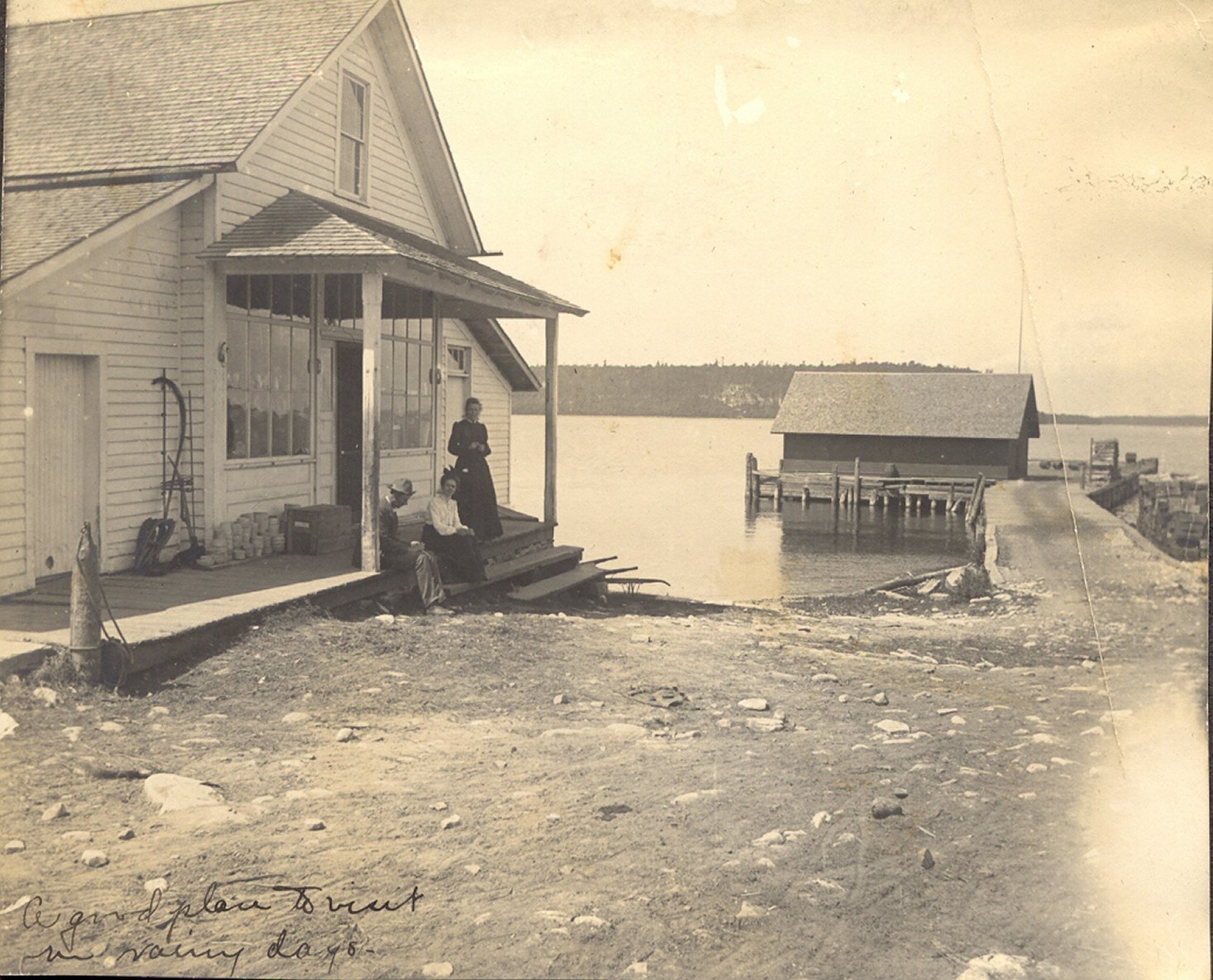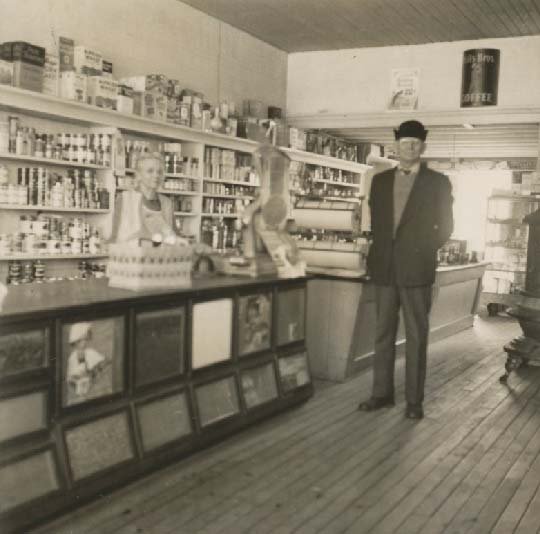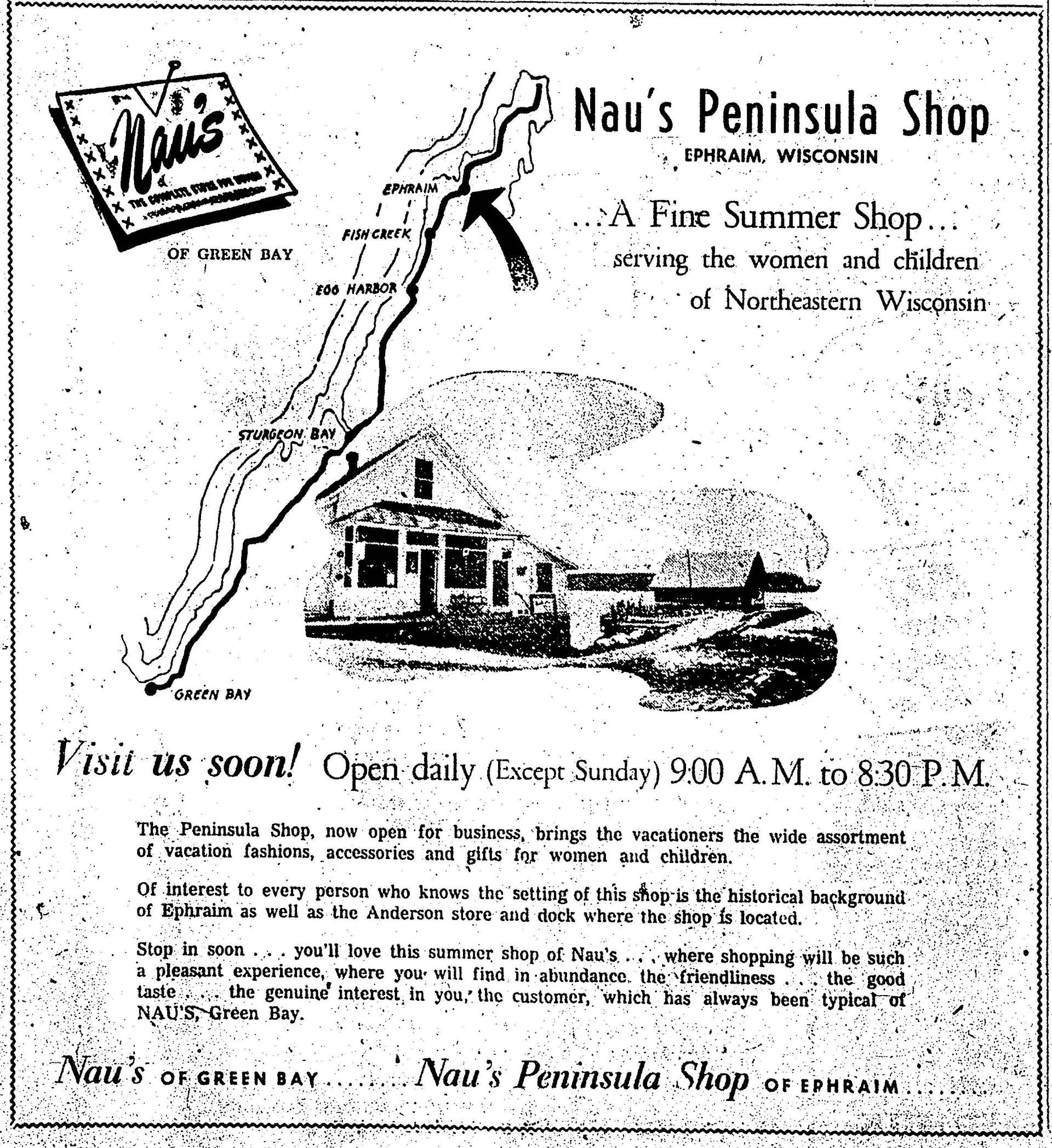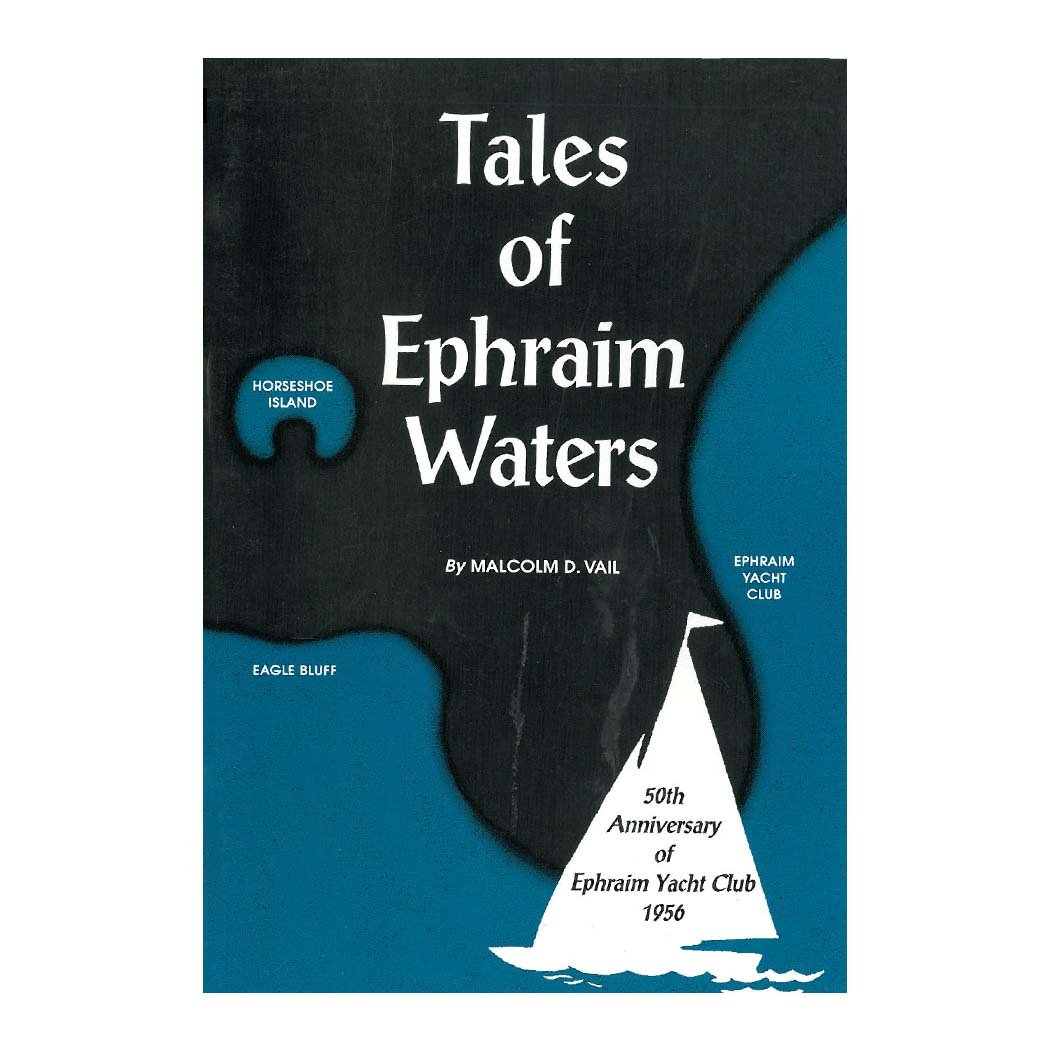More Than a Store
A Community Effort to Preserve the Historic Anderson General Store
by Cody Schreck
An early image of the Anderson Store and Dock. From the EHF Archival Collection.
The history of Ephraim would be wholly incomplete without mention of the Anderson General Store. Built in 1858, the business stood firm as a center of commerce and community at the north end of town for nearly a century. Over the course of its life, the store served as a lifeline to early residents in need of daily supplies, a mechanism for exporting goods to ports around the great lakes, a social gathering place, and hub for early tourism. But in the late 1950s, when the Ephraim Foundation–now named the Ephraim Historical Foundation–was still in its infancy, the future of Door County’s oldest country store was uncertain.
Munda and Adolph Anderson at the store counter (c. 1950). From the EHF Archival Collection.
Aslag Anderson built his general store on the shores of Eagle Harbor in the late 1850s as an extension of his maritime operation in Ephraim, which also included the Anderson Dock and Warehouse. The establishment of the Anderson Dock complex connected Ephraim with ports around the Great Lakes and was a catalyst in the growth of the previously isolated community. With the death of Aslag Anderson in 1892, his children Lizzie, Munda, and Adolph Anderson took over the store’s operations as the economy in Ephraim shifted away from maritime trade and towards tourism. The store accommodated not only the needs of locals, but also the needs of the growing number of summer residents arriving via steamship at the dock. Signs of the store’s decline began in the 1930s and 1940s with the Great Depression, changes in tourism, and the aging of Lizzie, Munda, and Adolph. By 1961, all three siblings had passed away and Adolph’s son Henry Adolph Anderson II, M.D. had taken control of property.
Nau’s Peninsula Shop advertisement from the Door County Advocate, June 26, 1952.
While Adolph and Munda were still alive, the family had already begun changing the nature of the store. In the 1950s the Anderson’s began renting space in the store to George Nau Burridge of Green Bay. For a time, Burridge’s daughter sold pre-made clothing from the west counter of the store. To accommodate this operation, Adolph Anderson allowed old dock timbers to be cut into new paneling for the west wing, and a toilet was installed. Controversy arose in 1959 when Burridge, now the primary occupant of the building, planned to install more modern features to accommodate his business including a concrete porch. These alterations caused quite a stir in the community as individuals from around the village began writing to Warren Davis requesting that someone stop Mr. Burridge from proceeding with his plans.
Early Ephraim Foundation member Malcolm Vail even penned a letter to Mr. Burridge discouraging him from altering the historic building. Mr. Burridge was seemingly convinced to retain the building’s character and ended his lease of the store within a few years without making major alterations, aside from the installation of the concrete porch. Marion and Bert Allen, who owned the property that included the Anderson Barn across the street, replaced Burridge as the lessees of the store for several years.
In the background of the Anderson Store’s final years of operations as a leased building, there was a growing community effort to preserve the building for perpetuity. Henry Adolph Anderson II, M.D. had been elected the first President of the Ephraim Foundation in 1949, and in partnership with the community the Foundation was hard at work embarking on preservation and restoration projects focused on the Anderson Dock, Pioneer Schoolhouse, and Field House. Recognizing the few years that Adolph and Munda had left around this time, community members and members of the Ephraim Foundation also turned their attention towards the future of the Anderson Store. An effort was started by the Ephraim Foundation to build a fund to care for the building should it ever come up for sale.
To do so, volunteers gathered old photos and stories of Ephraim, and Malcolm and Margaret Vail compiled them into a booklet titled Tales of Ephraim Waters. The proceeds of this publication kick-started the Anderson Store Fund. Concerns over Mr. Burridge’s building alterations came to a head at this same time, and the combination of growing interest in preserving the building and what appeared to be imminent threats to its existence spurred Warren Davis to write a letter to Henry Anderson in 1959, urging him to consider settling the family’s estate and making a deal for the building with Ephraim Foundation.
Anderson Store Restoration advertisement from the Door County Advocate, September 1, 1966.
By 1965, Ephraim Foundation had raised nearly $6,000 towards the Anderson Store project. That year, the community’s preservation wishes came true as the Village of Ephraim purchased the Anderson Store from the family with a combination of money from its own budget and funds raised by the Foundation. The Village agreed to lease the building to the Foundation for $1 and allow it to be restored and utilized as a community museum. However, the work was far from over. Transforming the building into a museum was a monumental task, and would not have been possible without the effort of a group of volunteers dedicated to bringing the Anderson Store back to its former glory for the public to enjoy.
Libby Gould, Phyllis Chomeau, Merrydelle May, Ethel Rasmussen, Ellen Ellis, and others joined together to spend countless hours cleaning the building, restoring the interior, raising money, acquiring historic artifacts, and creating a living history space. The Anderson Store Museum opened to the public in July of 1967. As a way to continue to raise money for the restoration of the Anderson Store, the Foundation partnered with the Ladies Aid Society of the Ephraim Moravian Church to reprint and sell the 1921 Ephraim Cookbook at the Anderson Store counter.
Today, the Ephraim Historical Foundation has full ownership of the Anderson Store and is able to fund its preservation through an endowment thanks to the philanthropic support of the late Ruth and Hartley Barker. Next time you drive past the Anderson Store, or stop in for some candy, we encourage you to reflect on the power of local community preservation efforts. Without those mentioned in this article, and many more who we have surely missed, the preservation of the Anderson Store would not have been possible. Let us channel that same community preservation ethos today as we embark on the Ephraim Historical Foundation’s continued effort to preserve and share the history of this great village.
The Anderson Store in 2018, photo courtesy of Tad Dukehart.






